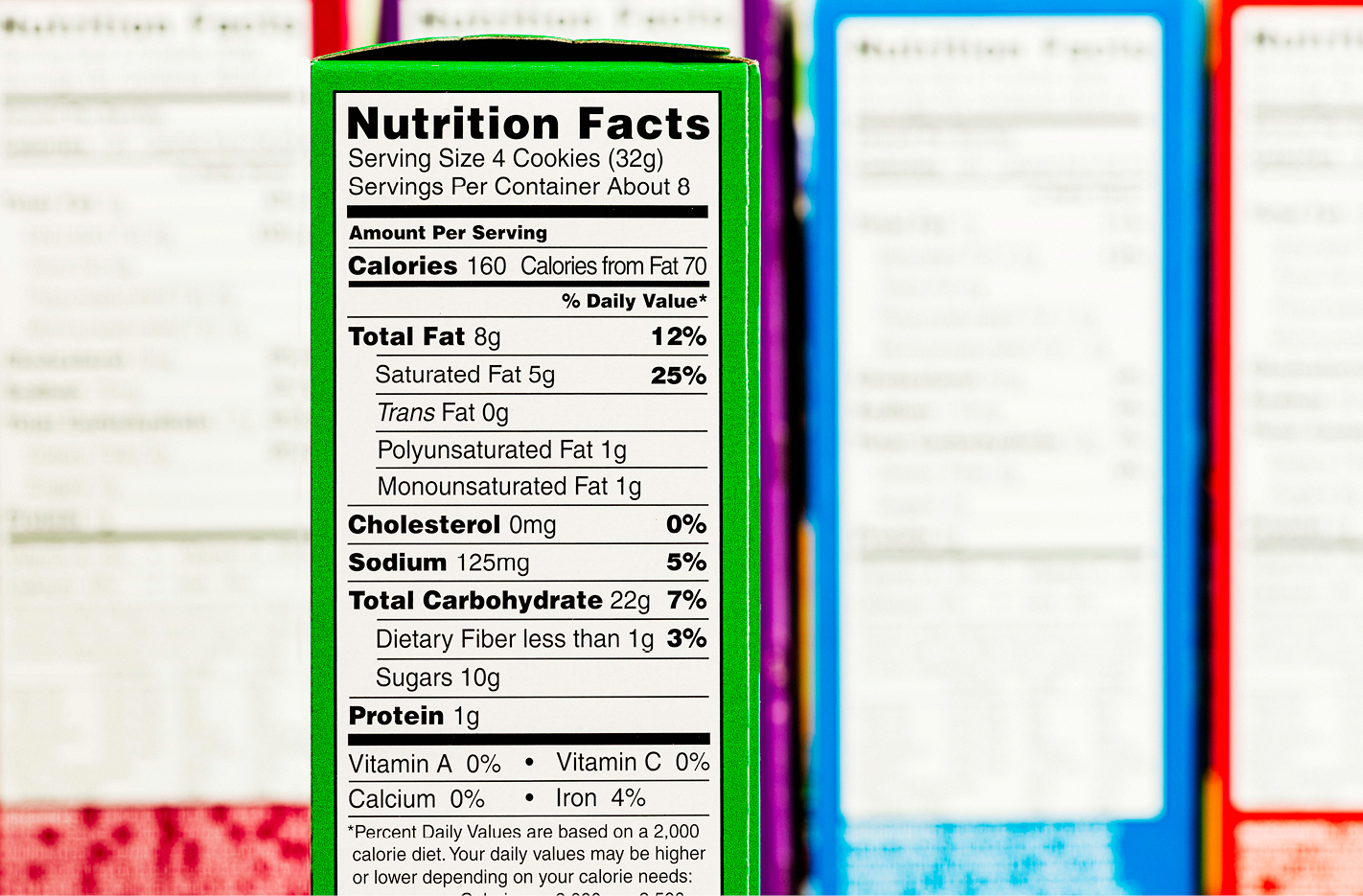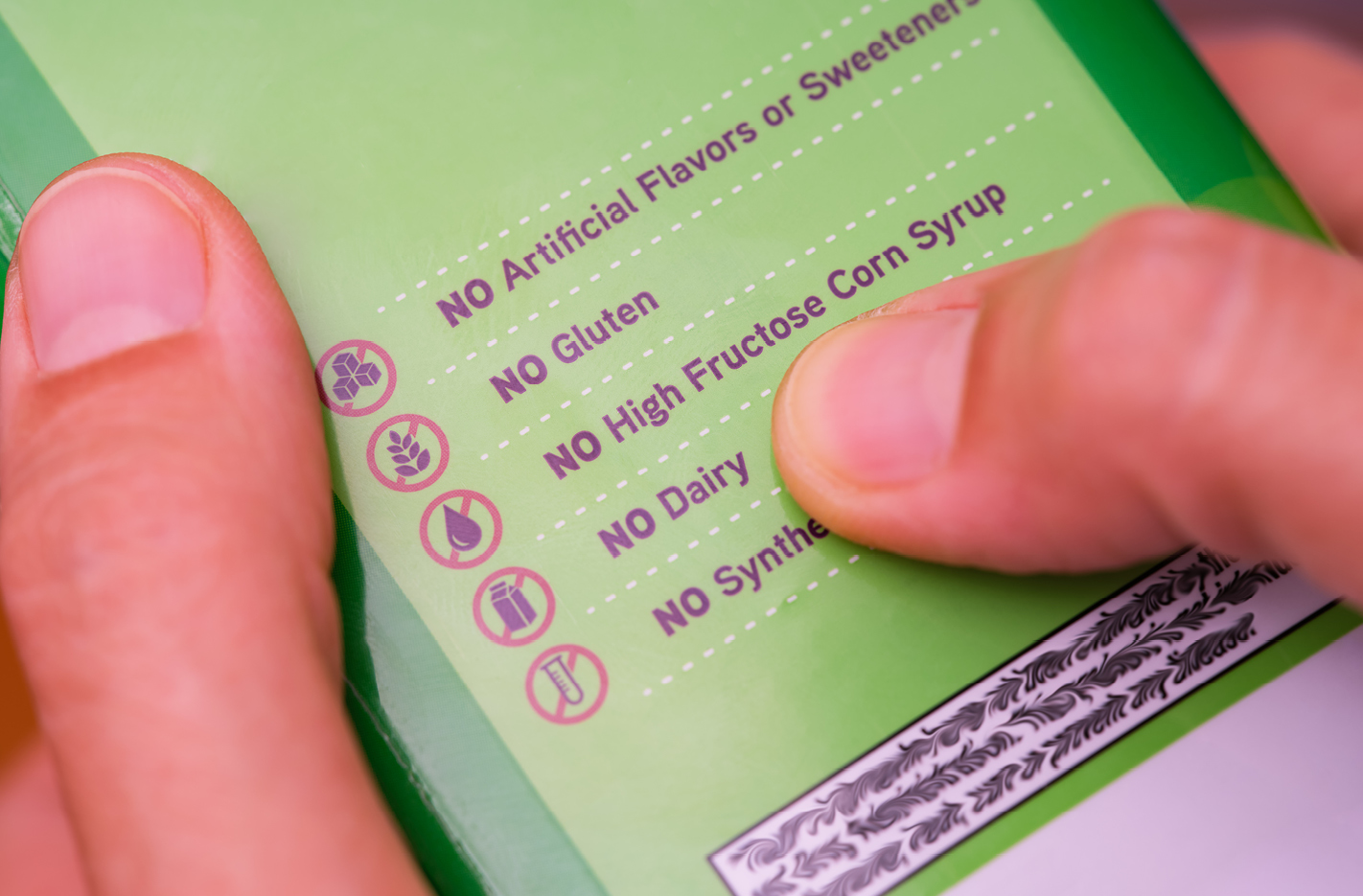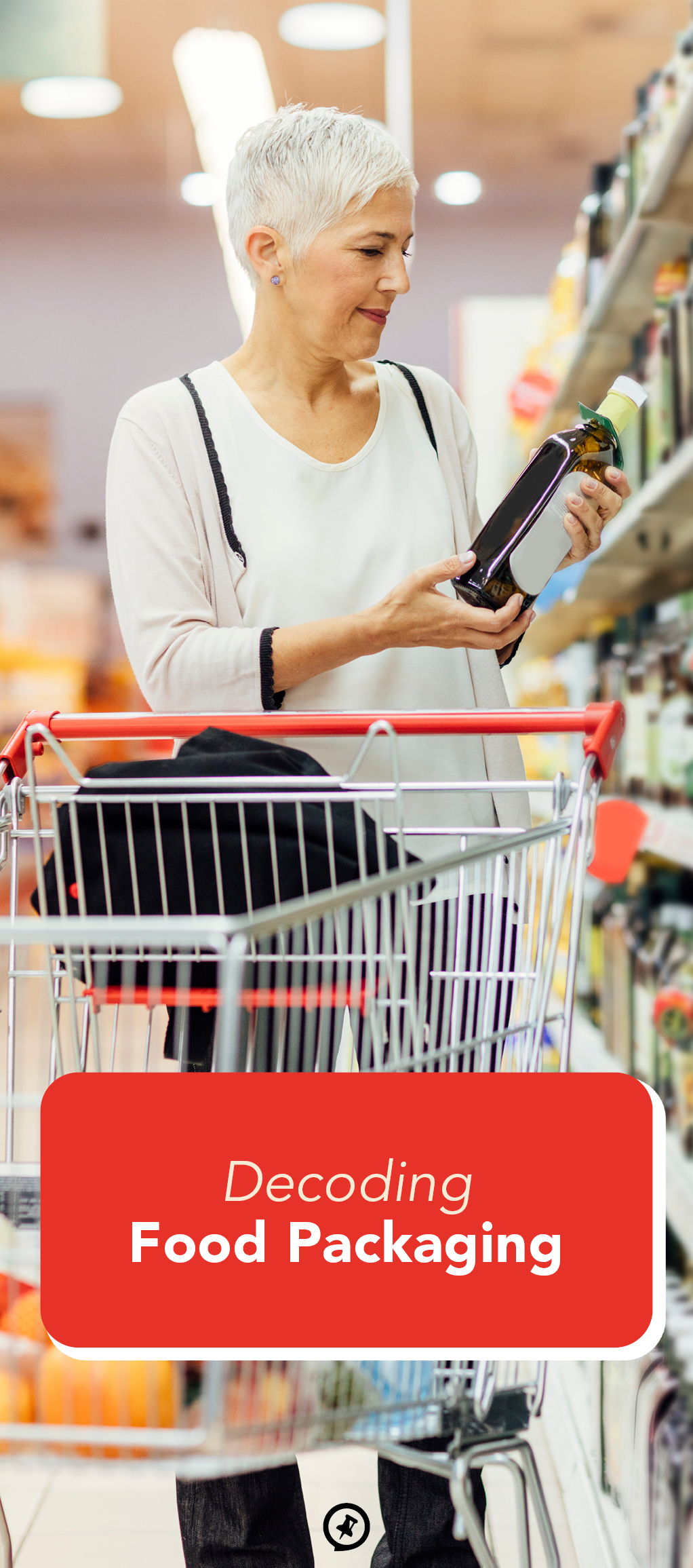Decoding Food Packaging
Marketing plays a key role in the success of a brand, which can unfortunately lead to food packaging that does not always accurately depict the reality of the product.
While it can be tempting to just see an item at your local grocery store and immediately add it to your cart, it’s important to take a moment to examine the packaging. Here are some tips to help you decode the often-complex information found on packaged food.

Examine the ingredients list
Before buying a product, you want to read the ingredients list since it is one of the only ways you can truly know what’s in your food. As a general rule, ingredients are listed from most prominent to least prominent, meaning the first one listed has the largest quantity in the product. You want to look for products that have whole foods as the first few ingredients and be skeptical of any long names you can’t pronounce. It’s also a good idea to limit ingredients like sugar, sodium, and trans fats, which all have a variety of names they could be listed as, including corn syrup, glucose, sodium alginate, and more. So if you’re uncertain what something is or see a rather complex name listed on the package, do a quick online search to find out what it is and if it has any negative health effects.
Understand the nutrition facts
Did you know that a packet of ramen noodles is two servings? Or that, for many beloved cereals, the serving size is only one cup? While the number of calories listed on an item’s Nutrition Facts label might seem low, it’s easy to eat more than the recommended serving size, especially for products that seem like an entire container is one serving. That’s why it’s essential to look at the Nutrition Facts label, which includes the recommended serving size and the number of calories, carbs, fat, fiber, protein, and vitamins in each serving of the product. You can see the daily value percentage of each item (other than protein), which is based on the total recommended amount that the average person needs in a day. Looking at the nutrition facts can help you to compare similar products and determine which one lines up the most with your health goals, and it can also help you to gauge how much of an item you should consume in a day. However, a serving size and daily value percentage are centered around the recommended daily average of 2,000 calories, so you can adjust your intake according to your age, height, weight, and dietary restrictions.

Know the differences between claims and seals
The FDA and USDA both require labels to be truthful and list all ingredients in a product, meaning that the product contains exactly what the label says it does. However, while producers can’t willfully leave an ingredient off the nutrition label, that doesn’t stop brands from making certain claims about their products that aren’t regulated or verified. There are several different claims that companies use to draw consumers to their products, which is why it’s important to understand the differences between a claim and a regulated, verifiable seal.
Common claims
- Natural and all-natural: These claims don’t necessarily mean that a product is natural. For meat, poultry, and eggs, producers submit a one-time application for the right to use the phrase, but once approved, there is no inspection or additional verification. A producer could change its procedure while continuing to make the claim. For other products, there’s no regulation since both the USDA and FDA have very basic definitions of what it means for an item to be natural or all-natural.
- No antibiotics: A claim of no antibiotics doesn’t mean that much when listed alone. Producers can use it on their labels if they provide sufficient documentation to back up the claim, but there’s no on-site inspection to verify it, and approval is based solely on the documents. It’s only significant when combined with regulated seals, including USDA Process Verified, USDA Organic, and American Grassfed. (More on these later.)
- Non-GMO or GMO-free: Genetically modified organisms (GMOs) are living organisms, such as animals and plants, that have had their genes genetically changed in some way, which can pose certain health risks to consumers. Unfortunately, a claim of non-GMO or GMO-free is unsupported and unverified since there are no clear, enforceable rules from the USDA for including it on a label. It only has true meaning when used in conjunction with the regulated USDA Organic seal since that prohibits the use of GMOs.

Seals to look for instead
- USDA Organic: The USDA states that organic foods are “grown and processed according to federal guidelines addressing, among many factors, soil quality, animal raising practices, pest and weed control, and use of additives.” These products are grown without the use of pesticides and synthetic fertilizers, and animals eat organic feed, live in conditions that accommodate their natural behavior, and are never given antibiotics or hormones.
- Animal Welfare Approved: The standards for this seal are set by the nonprofit A Greener World, which guarantees that animals are raised in the most humane environments. It prohibits the use of cages, antibiotics, hormones, and inhumane procedures, and it allows livestock to freely roam outdoors and act according to their natural behavior.
- American Grassfed: According to the Animal Grassfed Association, grassfed animals raised for meat or dairy are “born, raised, and finished on open grass pastures where perennial and annual grasses, forbs, legumes, brassicas, browse and post-harvest crop residue without grain.” They are never fed grain, animal byproducts, or antibiotics and are never confined to an area outside of their natural habitat.
- Non-GMO Project Verified: Developed by the nonprofit Non-GMO Project, this seal requires products to only use ingredients with GMO levels below 0.9 percent. It requires an on-site inspection and ongoing testing to ensure the GMO levels always remain below the standard for the seal.
When you take the time to read food packaging, you can have a better understanding of the health benefits, or lack thereof, of the products you consume. It’s not always an easy task, but your quality of health might depend on it.


















